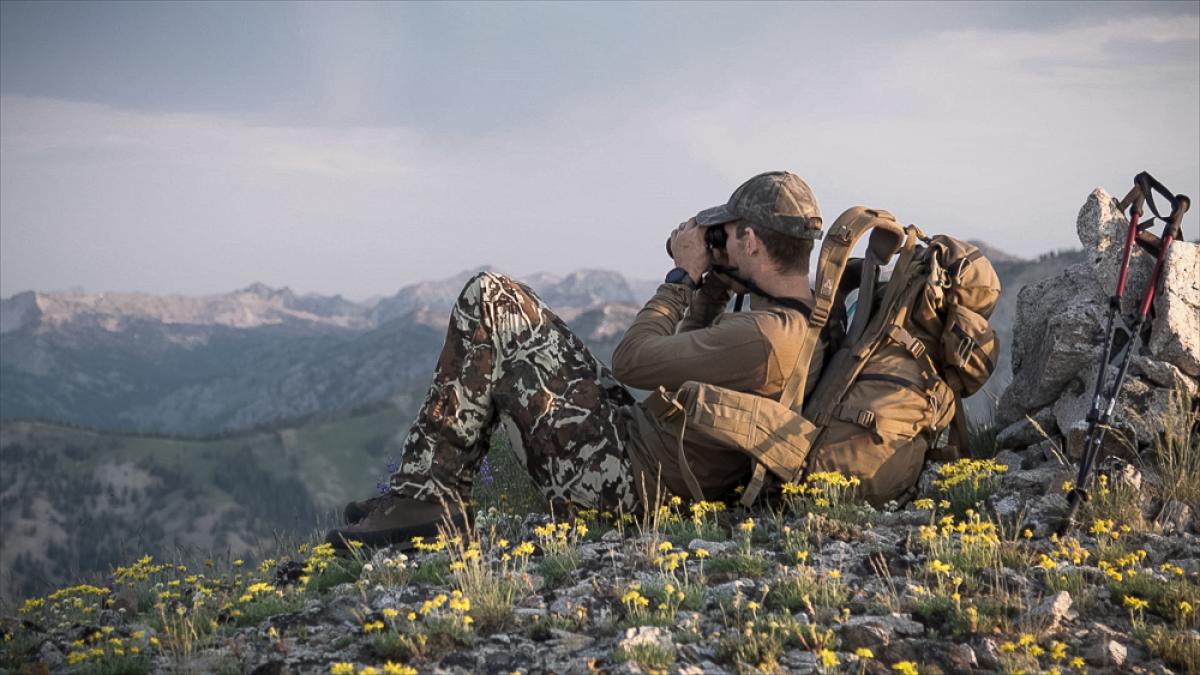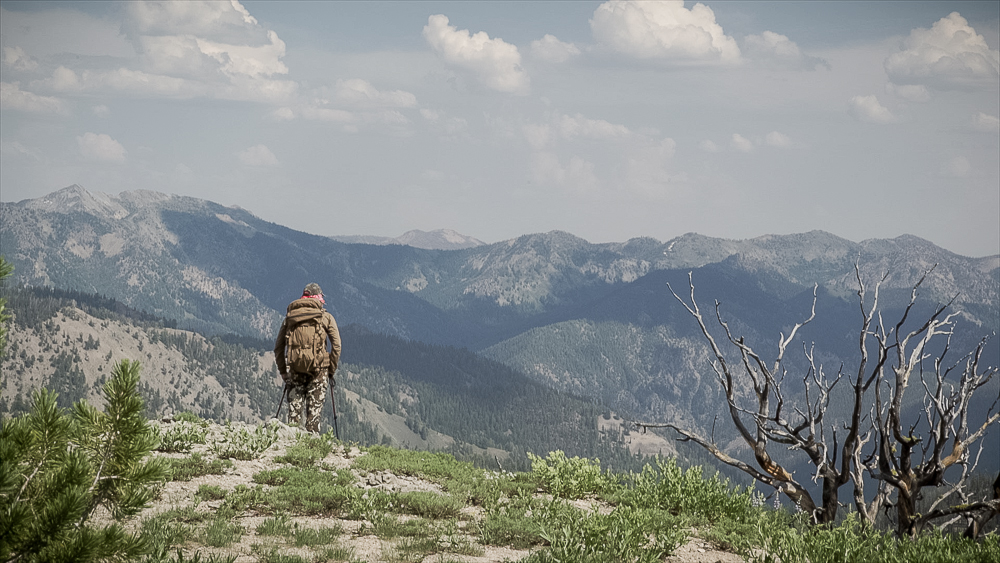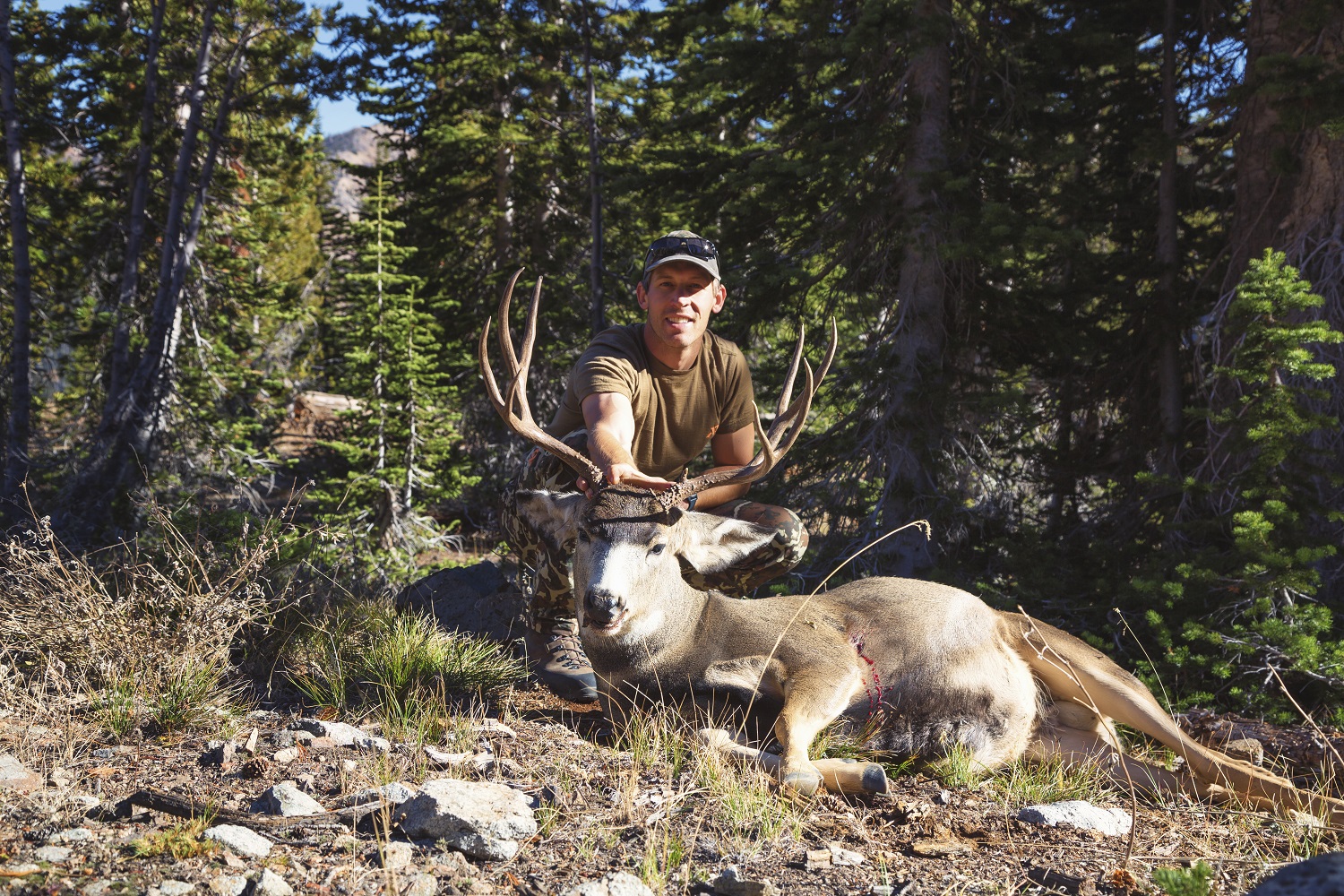
Early Season Muley Scouting Tips
By Brad Brooks
If you have luck like me, you probably didn't draw a limited quota tag for a big buck unit. Luckily, there are plenty of over the counter options in the west that yield trophy mule deer bucks every year if you are willing to put in the work. The earlier you figure out where you are going to hunt and start putting in the effort, the better off you will be when hunting season rolls around.
July is a great time to start getting out and exploring country to look for high country bucks as most mountain basins are clearing of snow, and the deer that summer in the high country are settling into their summer habitat. If you are itching to get a head start on your hunting season, here are a few early season mule deer hunting and scouting tips you can use to increase your odds of having opportunities on quality bucks in the mountains.

1. Do Your Homework
The best scouting starts at home. Numbers and data are your friend if you can put just a little bit of effort in sifting through them. Most western states publish annual harvest statistics on every unit. There is a lot of information about size of bucks harvested, number of bucks harvested, number of hunters, etc. There are a lot of ways to dissect the data, but I like to look at trends over the past several years for a unit. You can learn a lot about mule deer populations and dynamics with a little bit of data analysis. For extra credit, you can dig even deeper into the data by researching the game population reports that most fish and wildlife management agencies put out by species for particular units, zones or portions of the state. Buck and doe ratios, habitat quality and other limiting factors for mule populations are often published and publicly available. State game biologists can also be a good resource if you can find one willing to share his or her knowledge with you.
2. Embrace Technology I can’t remember my work life before the internet and email. I’m also not sure how I ever hunted before Google Earth. It’s not a secret tool like it once was, but it saves me untold hours of time in the field. Aerial photography technology is a must for every hunter today, in my opinion. Microsoft Bing also has a great aerial photo mapping software nearly identical to Google Earth, and I often use both because one will usually have a crisper image resolution for a given area.
3. Pick a Small Number of Places You’ve picked out an area, done your research and now you are wandering aimlessly on Google Earth trying to figure out where to hunt. Your goal should be to find a handful of places that you can get out on the ground and scout. There are many clues you can search for, but when it comes to hunting high country mule deer, one of the primary things you should look for is habitat security. Big bucks live a mostly solitary life and don’t like to be bothered. This usually this means getting as far away from roads and people as possible. This is a great excuse to get into the backcountry. Second, look for good habitat. This will always have to be verified on the ground, but bucks need water and food, and they have preferences for the kind of food they want. Green, protein rich grasses and shrubs will be preferred over less nutritious and nutrient poor food.
4. Scout Like You Hunt Finally, the fun part of this whole process: getting out in the field. If you are going to take the time and energy to go scouting, it is worth doing it right. I will start heading out in late June or early July depending on the snow levels. By mid-July at the latest, you can be fairly certain that the big bucks have moved into their high country summer range, and they will stay there until early September through early October when either weather or migration instinct pushes them down.
The first thing I look for when I’m out on the ground is habitat. In the early season in particular, I’m not as concerned with seeing animals as I am looking at habitat to make sure all of the key features of good habitat are present to hold big bucks. The habitat quality is as important an indicator of what is lurking around as is seeing that monster buck. Big game need food, water, habitat security and space to thrive. Look for the food, water sources and habitat types that bucks hang out in. Cirque Basins with multiple escape routes, flat benches with wide views, rim rock and protein rich grasses and shrubs are all important indicators of whether or not an area will hold big game.

At the risk of stating the obvious, you also want to look for deer. It’s hard to find big bucks during hunting season, and it isn’t any easier during the summer. In order to see quality bucks, you need to treat scouting like a hunting trip. In the summer, most big game animals are only active early and late in the day and will spend most of the day in the shade. Glassing first and last light is a must, as is being smart about not staying too long or pushing deer out by being careless about how visible you are and how much noise you make. Don’t get discouraged if you don’t see big bucks everywhere.
Unless you drew the tag of a lifetime, it is unlikely you will see huge bucks around every corner when you are hunting. Scouting is no different, and particularly if you are scouting early in the summer, you are mainly looking at habitat and getting to know the country. If all the signs of good habitat are there, don’t give up too early on an area. The last item I look for on scouting trips are places to bivvy. Especially in places where water is scarce, this is important as time spent looking for and gathering water is time not spend hunting. If I have to walk 4 miles after sun down in the dark back to camp, I’m less likely to stay out until dark every night, especially if I’m getting tired late in a trip. On the contrary, I don’t want to camp right where I plan to hunt. I want to be as close to where I am hunting and still be secluded. Being close to a water source is crucial, and if you don’t camp near a water source it takes time away from hunting and adds logistic complexity. Finding a camping spot before you head out with a heavy pack and a rifle or bow saves a lot of time.
5. Homework, Scout, Repeat. After getting out on the ground, Take note of what you did and did not see. Not seeing what you are after is useful information. If you didn’t like what you saw, move on to your next area. And no matter what, remember to have fun. If you are spending time in the backcountry, even if you aren’t surrounded by trophy bucks, remember to enjoy the process and the places the hunt takes you.